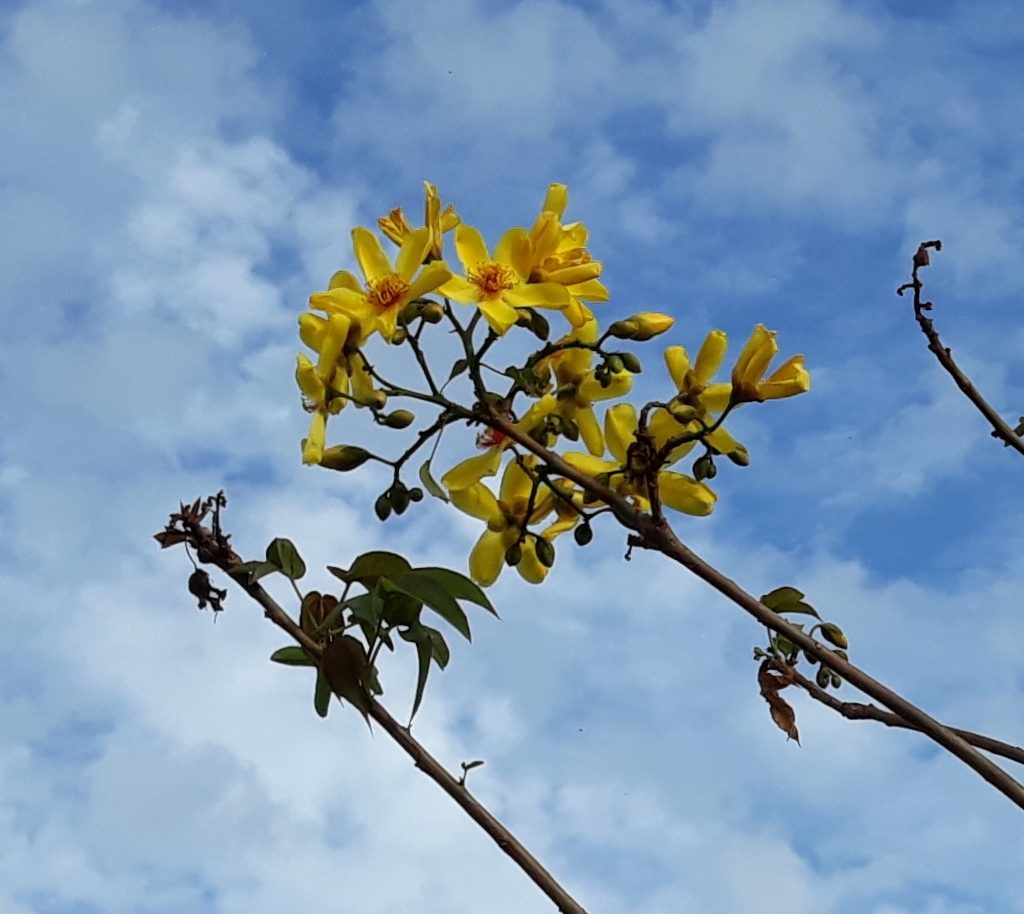
Form and Size: A small tree, 3-12m tall; deciduous.
Distribution: Qld. and N.T.; in open forests and common in coastal areas on granite ridges.
Leaves: Deeply lobed, 5-7 egg-shaped or lance-shaped lobes, dark green, smooth, 5-7cm x 8-10cm.
Bark: Creamy-grey, smooth.
Flowers: Bright yellow, 5 open petals, stamens red, about 10cm diameter; borne in small terminal panicles.
Flowering Period: August to October when the tree is leafless.
Fruit: Capsules, egg-shaped, about 8cm long; splitting open when ripe to release black seeds embedded in cotton fibre.
Cultivation/Notes: Propagate from seed. Needs well drained soils and a sunny position. A very attractive tree when in flower, the flowers being held for a considerable time.
An ancient story concerning this tree, known as cottonwood in earlier times, was told by an Indigenous Elder to the late Percy Trezise, a writer, explorer and historian of Indigenous Aboriginal rock painting.
You can read the complete story in the book “Quinkan country: adventures in search of Aboriginal cave paintings in Cape York” by P.J. Trezise. See details here. We provide a short precis below.
According to the Dreamtime story, Woodbarl the White Cloud set off on a long journey to the place of Turramulli the Thunderstorm. Woodbarl had his mind set on marrying one of Turrimulli’s daughters and presumably he anticipated trouble with this plan, because en route he made a special spear.
Eventually Woodbarl neared Turramulli’s place and a small green honeyeater sang out a warning. Turramulli sent his older daughter to check who was around. She liked the look of Woodbarl and she returned to tell her father she had not found anybody near.
Woodbarl quietly crept close to the resting Turramulli and then hurled the special spear at him. That remarkable spear went right through a tree, through Turramulli’s two thighs, and into another tree.
Roaring with pain, Turramulli jumped up and hurled bolts of fire at his attacker and then chased Woodbarl all the way back to his home in a distant deep cave.
Woodbarl’s son, Doogalbul the lizard, was suffering from a stomach ache at the time and needed to go outside. Despite dire warnings from Woodbarl, the lizard-son emerged from the cave. Immediately Turramulli killed him with a thunderbolt.
The grieving father cried hard and then buried Doogalbul. Then he decided to make a new son. He sang a special song over the cottonwood tree, and it became the new son of Woodbarl.
Still today we see this tree showing its bright yellow flowers, representing the lightning of Turramulli, and when the dry brown fruits burst open, they show the white cloud of Woodbarl. This happens at the time of year when thunderstorms may appear, and we may see the great black cloud of Turramulli once again chasing the small white cloud of Woodbarl across the country.